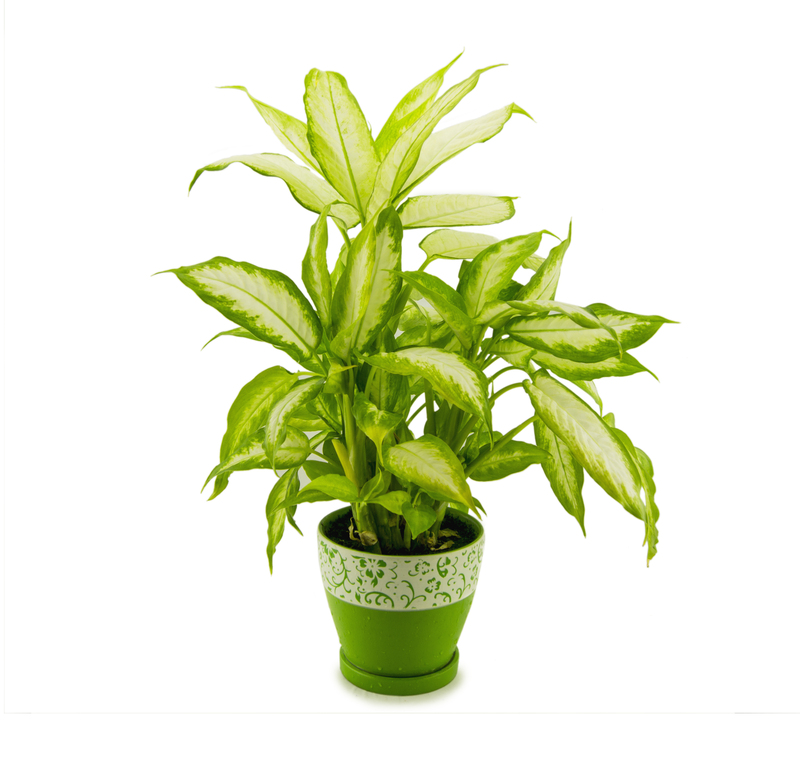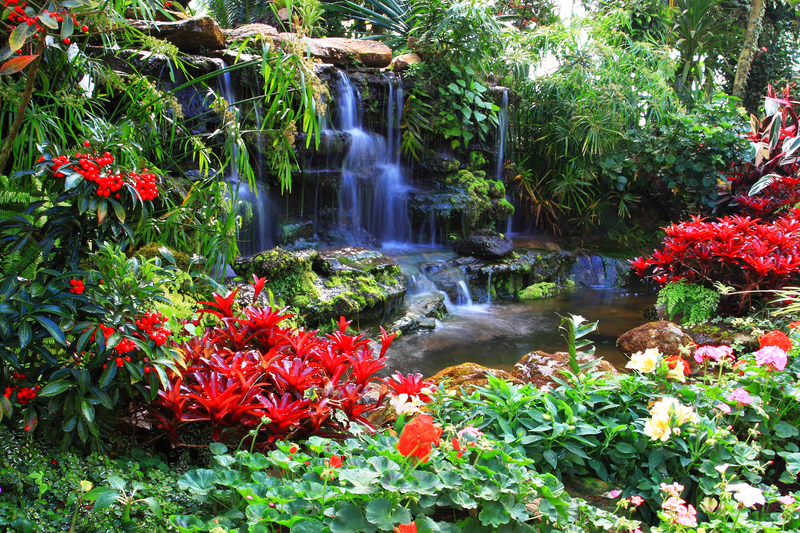Harness the Power of Zen in Your Outdoor Space Design
Posted on 09/09/2025
Harness the Power of Zen in Your Outdoor Space Design
Zen-inspired outdoor spaces blend tranquility, simplicity, and purpose to create environments where nature and human presence find harmonious balance. Whether you're working with a sprawling backyard or a compact balcony, integrating Zen design principles can transform your outdoor area into a sanctuary for relaxation, mindfulness, and well-being. In this comprehensive guide, we'll explore how to harness the power of Zen in your outdoor space design, the essential elements you need, and expert tips for a cohesive, peaceful retreat.
Table of Contents
- What Is Zen Design?
- Core Principles of Zen Outdoor Space Design
- Essential Elements for a Tranquil Zen Space
- Step-by-Step Guide to Creating Your Zen Oasis
- Choosing Plants, Water Features, and Natural Materials
- Zen-Style Seating and Accessories
- Maintaining and Enjoying Your Zen Outdoor Retreat
- Conclusion: Embrace Zen for Outdoor Bliss
What Is Zen Design?
Originating in Japan, Zen design philosophy reflects the ideals of balance, calm, and simplicity, drawing from Buddhist principles. In landscape and outdoor space design, a Zen approach strives to create harmony between natural elements and the human spirit, making your garden or patio a place for quiet contemplation, meditation, and joy.
By harnessing the power of Zen in your outdoor environment, you set the stage for mental clarity, de-stressing, and improved well-being. But what are the core tenets that define a truly Zen-inspired outdoor space?
Core Principles of Zen Outdoor Space Design
1. Simplicity (Kanso)
At the heart of Zen outdoor design is kanso, or simplicity. Remove unnecessary clutter, opt for simple layouts, and focus on just a few key features. Clean lines, intentionally empty spaces, and minimalism reign supreme.
2. Naturalness (Shizen)
Integrate natural elements--such as stone, wood, water, and living plants--using shapes and forms found in nature. Shizen means accepting things as they are, with gentle curves and humble materials.
3. Asymmetry (Fukinsei)
Zen spaces avoid rigid symmetry, which can feel artificial. Instead, they embrace asymmetrical layouts and arrangements that mimic natural balance, allowing the eye to wander and discover.
4. Tranquility (Seijaku)
Achieve serenity by reducing stimulating colors, sounds, and objects. Placeholder stones, soft foliage, gentle water trickles, and quiet corners foster an deep sense of calm.
5. Subtlety (Yugen) and Suggestion (Shibui)
Understatement is vital. Instead of overt showiness, focus on subtle details that hint at deeper meaning or natural beauty. The power of suggestion leaves space for contemplation and imagination.
Essential Elements for a Tranquil Zen Space
To create a Zen-inspired garden or outdoor area, it's important to include certain natural and design elements that evoke harmony and peace:
- Rocks and stones: Symbolize mountains and permanence. Arrange them deliberately as focal points or pathways.
- Sand or gravel: Represents water, especially in dry Zen gardens. Rake into calm wave patterns.
- Water features: A pond, stream, or even a modest fountain adds serene sound and a sense of flow.
- Minimalistic plantings: Choose evergreens, moss, bamboo, and plants with simple forms.
- Natural wood: Use untreated or weathered wood for benches, walkways, or fences.
- Quiet retreats: Nooks for sitting or meditating, shielded by greenery or a natural screen.
Step-by-Step Guide to Creating Your Zen Oasis
Ready to harness Zen principles in your outdoor space design? Here's a step-by-step approach for any home or garden size:
1. Plan with Purpose
Start by outlining your goals. Do you want a space for meditation, tea, mindful gardening, or simple relaxation? Sketch your area and decide on spots for seating, paths, and focal features.
2. Clear Clutter and Simplify
Remove unnecessary furniture, decorations, or tangled plantings. A Zen outdoor retreat flourishes with space to breathe.
3. Define Pathways
Consider winding paths with irregularly placed stepping stones to guide movement and contemplation. Pebbled trails or compacted earth also reinforce a natural, gentle flow.
4. Incorporate Natural Materials
Use rocks, wood, and gravel set amid plantings, water, or sand. Each element should look as though it belongs--subtle, not showy.
5. Add a Water Element
If space and budget allow, a small pond with lotus or koi, trickling fountain, or bubbling urn delivers the therapeutic sound of running water. Even a bowl with floating blossoms evokes a Zen feel.
6. Focus on Focal Points
Designate visual resting spots--perhaps a stately stone, a bronze lantern, or a mossy mound. Arrange them off-center, enhancing the asymmetry that defines Zen design.
7. Choose a Cohesive Palette
Limit color to shades of green, gray, beige, and wood. Pops of color may appear with a single flowering shrub or Japanese maple but should not dominate the palette.
Choosing Plants, Water Features, and Natural Materials
Essential Plants for Zen Gardens
Selecting the right greenery is central to bringing Zen tranquility to your outdoor design:
- Moss: Ideal for ground cover, lending a velvet softness that's quiet and lush.
- Bamboo: Symbol of strength and flexibility. Use as screens or accents.
- Evergreens: Pines, cypress, or yew provide year-round shade and form.
- Japanese maples: Add a dramatic (yet understated) seasonal highlight.
- Ferns and grasses: Soft foliage creates movement and texture.
- Azaleas or camellias: Offer subtle, controlled flowering.
Resist the urge to overplant; leave spaces open for contemplation and airiness.
Water Features that Evoke Calm
Even if space is at a premium, it's possible to include a water element in your design. Consider:
- Bubbling urns or basin fountains: Easy to install and maintain, providing gentle sound.
- Reflecting pools: Calm and mirror-like, enhancing a meditative atmosphere.
- Miniature streams: Use rocks and gravel to suggest the path of water, even if dry.
Position water elements where you can sit, listen, and unwind.
Stones, Gravel, and Wooden Features
- Stepping stones: Lead the journey, invite mindfulness with every step.
- Gravel (white or gray): Rake into soothing patterns to symbolize water or waves.
- Wooden decks, benches, or fences: Choose weathered or natural wood finishes for authenticity.
Zen-Style Seating and Accessories
Minimalist Furniture
Select seating that's simple, functional, and close to the ground--such as wooden benches, stone stools, or flat cushions. Avoid ornate, brightly colored, or overly plush pieces that distract from the calm ambiance.
- Low benches: Invite quiet time and contemplation.
- Floor cushions (zafus): Ideal for meditation spaces, easily portable.
- Subtle shade: Use simple canvas sails, bamboo screens, or delicate pergolas for dappled light.
Elegant Accessories
Every item should have purpose and intention. A few artful touches to try:
- Stone lanterns (Ishi-doro): Traditional Japanese lamps for subtle night lighting.
- Ceramic basins: For washing hands or as a reflective garden ornament.
- Bonsai or small statuary: Understated, not crowded.
Remember: less is more. The power of a Zen space lies in open, uncluttered views.
Maintaining and Enjoying Your Zen Outdoor Retreat
Keep it Simple
Maintenance is mindful in Zen spaces; trimming, raking, and cleaning are all part of the experience. Choose drought-tolerant or native plants, sweep gravel patterns regularly, and let leaves or moss accumulate naturally in some areas for authenticity.
Mindfulness Activities for Your Zen Garden
- Meditation: Use your seating niche as a daily meditation spot, focusing on breath and sounds of nature.
- Yoga or gentle stretching: Practice on a wooden deck or gravel clearing.
- Tea ceremonies: Enjoy the ritual of making and sipping tea outdoors, fostering presence and gratitude.
- Quiet reading or journaling: Nurture creativity and reflection surrounded by green calm.
Lighting and Evening Enjoyment
Incorporate soft, warm lighting--stone lanterns, hidden LEDs, or solar path markers. Avoid harsh white spotlights, which disrupt the serene flow of the space.
Conclusion: Embrace Zen for Outdoor Bliss
By harnessing the power of Zen in your outdoor space design, you're inviting deeper peace, clarity, and connection with nature into your daily life. Whether you design a full Zen garden or simply infuse a patio with tranquil elements, the rewards include greater relaxation, increased mindfulness, and an environment that soothes the senses.
Ready to start your Zen transformation? Begin with a single feature--a stone path, a water bowl, or a bamboo screen--and let your outdoor retreat evolve with intention. As the seasons shift, your Zen space will continue to offer fresh inspiration and serenity.
Embrace the understated beauty and mindful design of Zen outdoors, and discover how a thoughtfully curated space can support your best life--one moment of calm at a time.
Frequently Asked Questions About Zen Outdoor Space Design
- Can I create a Zen garden in a small space? Absolutely! Even balconies can become Zen nooks with a stone, pot, or quiet corner.
- Do I need water in my Zen garden? Not always. Sand or gravel patterns can symbolize water's flow, and a simple basin can suffice.
- What colors work best for a Zen harvest design? Stick to earthy greens, grays, browns, and occasional deep reds or soft golds for accent.
- Is a Zen garden high maintenance? No. Once established, they require minimal upkeep--raking and pruning are meditative, not overwhelming.
Create your own tranquil haven by harnessing Zen in your outdoor design today!



